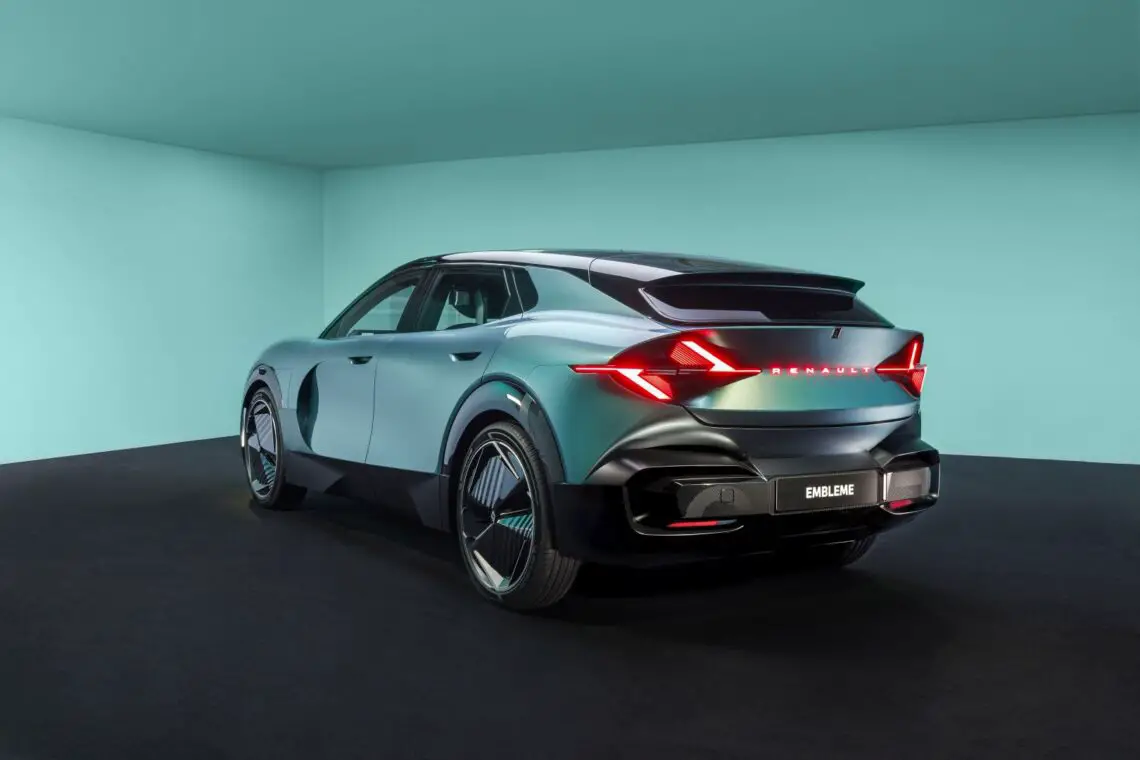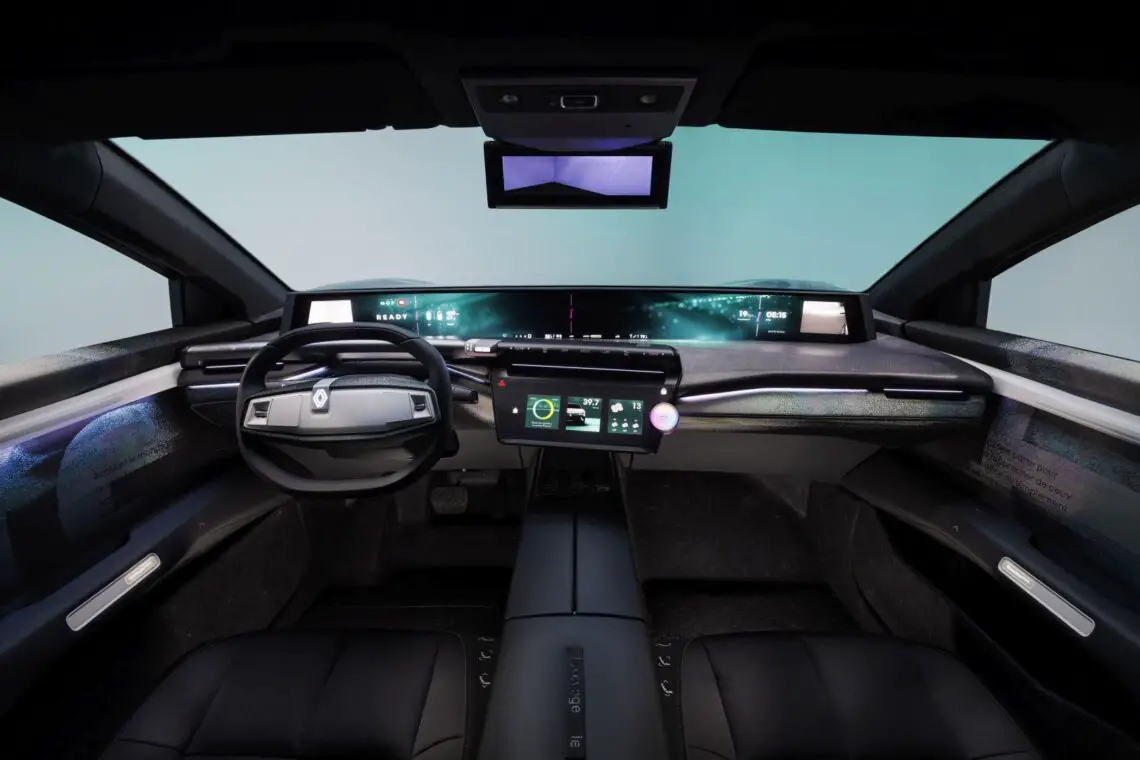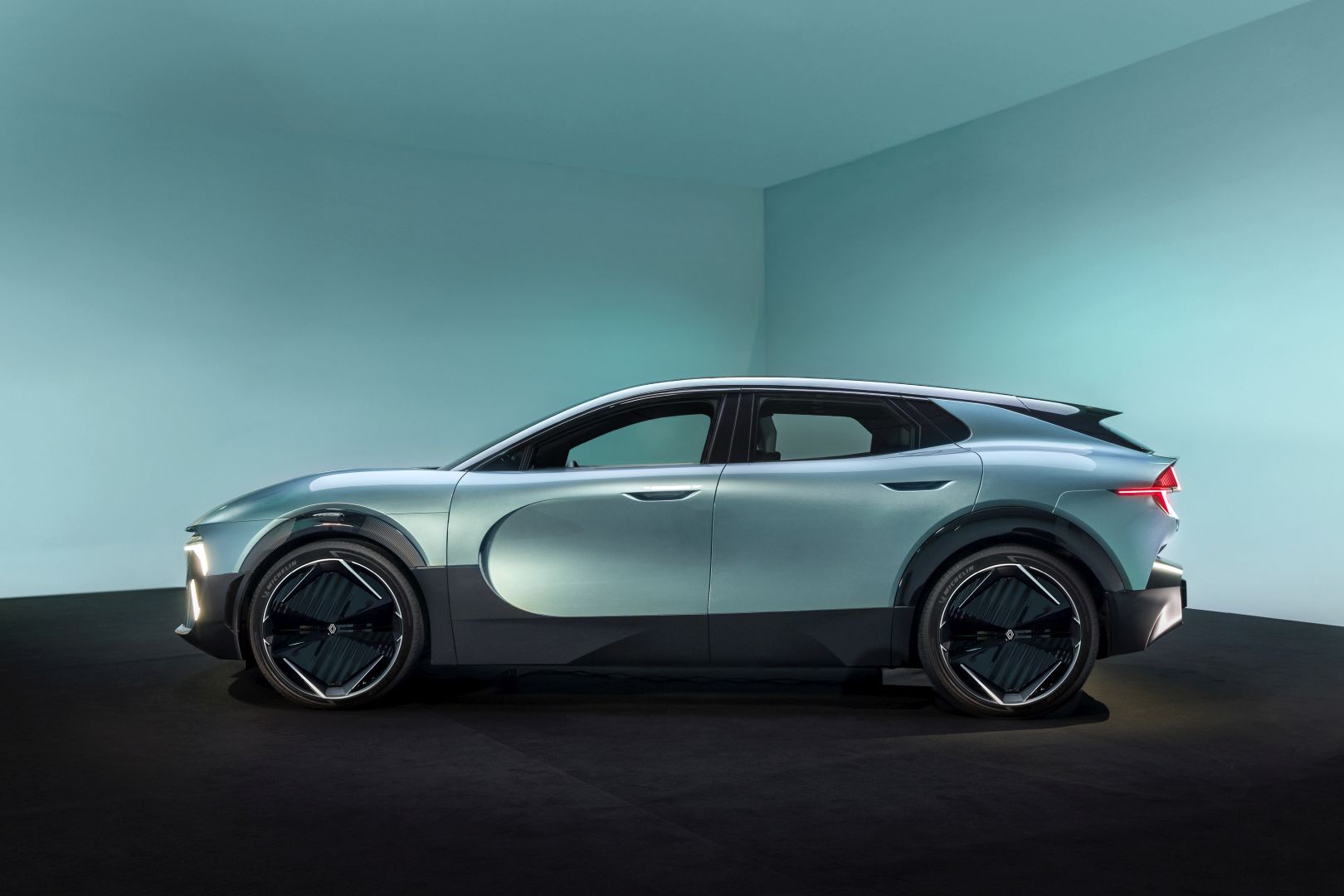Why this cool new shooting brake from Renault has pineapples on the dashboard
Truly sustainable
Electric cars are cleaner than gasoline or diesel cars, but they are not entirely without a footprint. It takes quite a bit of energy to build them, and they require quite a few rare resources. But: once they are running, they make up for a lot. Especially if the production process becomes ever cleaner. That is exactly what Renault wanted to investigate – with the result being the Emblème. A study model that shows how far you can go if you put every detail under the sustainability magnifying glass.

5 tons of CO₂
Renault engineers were given a tough assignment by headquarters: the Emblème had to be produced with 90% fewer emissions than a comparable 2019 car. In numbers: from 50 tons of CO₂ down to just 5 tons – and that over its entire lifetime, from production to scrapping. No small task, then.
How do you address that? By reviewing everything – really everything. Not only at Renault itself, but also at twenty suppliers. From Michelin to the supplier of the windshield wipers: everyone had to do their bit. And that yielded great innovations, such as:
- AKWEL door handles: 65% recycled material, 60% lighter and 88% less emissions
- Aluminum doors by Constellium, made from recycled materials
- Roof and dashboard upholstery from Forvia, based on linen and pineapple fiber
- Sound insulation made of Autoneum, from single polyester fibers
- Battery from Verkor, with 72% less emissions than conventional batteries
- Headlights from Forvia Hella, with 50% less emissions than regular units
Even the windshield wipers have been taken in hand. Manufacturer Valeo developed a system with 3D printed parts and a more economical nozzle – good for 60% less emissions. Yes, even cleaning your windshield can be more sustainable these days.

Functional design
So nice and durable, this Emblème – but it also looks slick. With its length of 4.80 meters, low roofline of 1.52 meters and muscular wheel arches, it looks like a mix of a sporty coupe and a practical station wagon. In other words: a shooting brake.
And the design is not just for show. Every little line and panel is aimed at guiding the air along the body as smoothly as possible. Even the rims are partially sealed. With the help of wind tunnel from the Alpine F1 team, Renault managed to achieve an impressive drag coefficient of 0.25. And the Michelin tires provide less rolling resistance and use less rubber.

Pineapple on your dashboard
On the inside, too, the Emblème does high marks for sustainability. The dashboard and door panels are covered with linen from Normandy and – believe it or not – fibers from the pineapple plant. The seats are upholstered in woven, recycled polyester. And no, that doesn’t sit like a plastic garden chair. On the contrary. Your ears are spoiled, too. In collaboration with Jean-Michel Jarre – a French pioneer in electronic music – Renault developed an audio system with 14 speakers.

Hydrogen
Beneath the handsome exterior is a powertrain with two power sources: a 40 kWh battery for short trips and a 30 kW hydrogen fuel cell for longer distances. On paper, the car will travel about 1,000 kilometers. The electric motor is on the rear wheels and uses no rare earths. The battery cells are supplied by the French company Verkor, which will soon also produce the cells for the Alpine A390.
The Emblème itself is built – how could it be otherwise – in France, with three-quarters of the suppliers less than 300 kilometers away. Unfortunately, this cool concept car will not go into production, but of course the knowledge gained will not disappear into a drawer. So chances are that in a future Renault you will suddenly come across extremely efficient wiper washers or a touch of pineapple fiber.
See also: Renault Captur (2025) Review – Still distinctive? – AutoRAI TV

